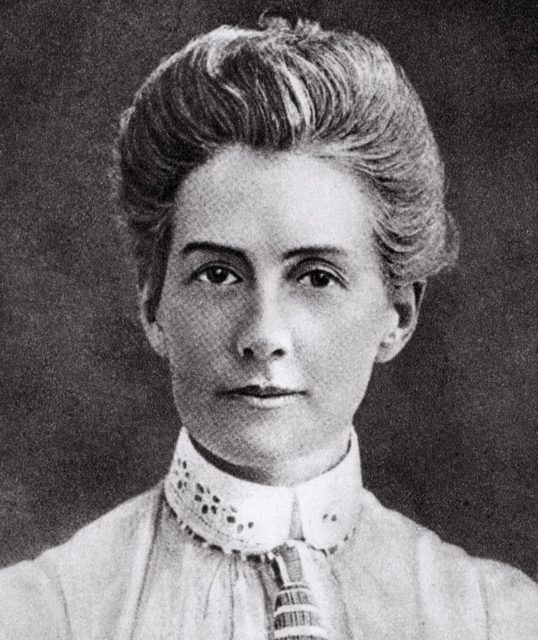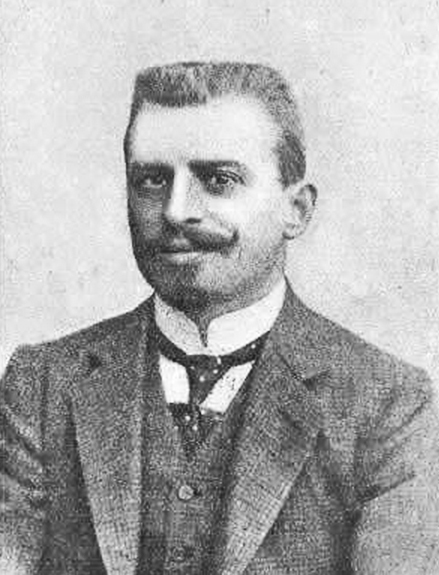She was sentenced to death by the Germans in WWI for helping the Allied cause but was spared by the German Emperor and the Pope.
Louise Thuliez was born on December 12, 1881, in the village of Preux-au-Bois, France. Growing up, no one let her forget how much smaller France had become since the Germans had taken the French provinces of Alsace and Lorraine in 1871.
Thuliez worked as a teacher in Lille but resigned when WWI started in July 1914. She went to the local Red Cross Hospital to volunteer her services as a nurse, but they refused her offer. Depressed, she turned to her brother who was a priest.
No doubt in trying to comfort her, he claimed God would give her a chance to serve a higher purpose in the war. Little did he realize how prophetic his words were; or how dangerous.
On August 7, the Battle of the Frontiers began. Britain and France joined the fight against the Austro-Hungarian Empire and its German ally. By August 24, most of the British Expeditionary Forces were being evacuated, but six soldiers were left behind in Preux-au-Bois as there was a shortage of ambulances.
When it became apparent they had been abandoned; Thuliez took over. Due to a lack of food, she asked the mayor for permission to break into a bakery so she could feed the men. He consented. When asked why she was sticking her neck out for British soldiers, she replied that without them, the rest of France would go the way of Alsace and Lorraine.

Shortly after, the Germans took over her village. She and a friend made a makeshift Red Cross flag and flew it out her window. It worked. The Germans recognized her neutrality, even when they went in and saw the injured British soldiers. No attempt was made to take them out and put them in jail.
Despite this, she took no chances. Thuliez had heard that Prince Reginald de Croy had set up a safe house for Allied soldiers. Her neighbors gave the men civilian clothes, and she took them out of the village and into the Prince’s safekeeping.
There they met other British soldiers who had been in hiding. Soon they numbered 40 men. Thuliez needed help. She went to Brussels where the resistance provided false documents that the soldiers required to travel. Thanks to her, they all made it back to Britain.
She was not finished. Many French and Belgian civilians did not want to be conscripted into the German army. Some hid in the Forest of Mormal and needed help getting out of Belgium and into the neutral Netherlands.

The resistance helped again and introduced Thuliez to Edith Cavell. In 1915, Cavell was a British Red Cross Nurse who ran a hospital in Belgium, which was why the Germans let her stay. She had also set up an underground network to smuggle Allied soldiers out of the country and into the Netherlands.
Helping Cavell was Philippe François Victor Baucq. He was an architect who used various buildings throughout Belgium as safe houses for those trying to leave. After a day’s work treating those she could, Thuliez would spend her nights escorting men to Cavell’s hospital in Brussels, or to other safe houses that Baucq maintained.
That is how she was caught. An operation like theirs, helped by various churches, could not stay secret for long. There was also the matter of some 200 Allied soldiers vanishing from Cavell’s hospital.
The Germans raided Baucq’s Brussels home on July 31, 1915. Apart from the architect, they also found Thuliez and evidence which led them to Cavell’s hospital. All three were arrested. Based on Baucq’s papers, another 31 were caught up in the dragnet.
Their trial took place on October 7. When asked why she got involved, Thuliez said it was because she was French. Despite this, she was deemed guilty of high treason. Four days later, Thuliez and seven others were sentenced to death – although two would have their sentences reduced to life in prison.
Despite international condemnation, Cavell and Baucq were executed on October 12. When the news reached Britain, the number of those who signed up for military service doubled. In America, the tide of public opinion turned and eventually led to them joining the war on the Allied side.
Thuliez’s death was scheduled for the next day but was postponed. She could not have known that the US and other countries were stepping up diplomatic pressure on the Germans. By October 17, Thuliez was getting impatient – were they going to kill her or not?
President Woodrow Wilson had expressed his displeasure to the German Emperor, Kaiser Wilhelm II. So did Pope Benedict XV, as did King Alphonse XIII of Spain. The Spanish Ambassador to Brussels, the Marquis de Villobar, had his work cut out – trying to be both diplomatic, yet firm with the Germans.
The Emperor buckled, and on October 27, Thuliez and two others had their death sentences commuted to life in prison. She was sent to the jail at Cambrai in northern France where conditions were brutal, and disease was rife. On January 21, 1916, she was sent to the Siegburg Prison in Bonn, Germany, where conditions were equally bad.
There, prisoners had to make weapons and sew army uniforms. Thuliez rebelled by sewing buttons on so badly they fell off easily. She also wrote a letter to the German Minister for Home Affairs, protesting the munitions work. When not doing that, she put her nursing skills to use, but it did little good. Many died from the harsh conditions.
Fortunately for them, WWI ended in November 1918 with Germany’s defeat. In 1919, French President Georges Clemençeau awarded Thuliez the Legion d’Honneur and the Croix de Guerre.
She spent the interim war years teaching and campaigning for the women’s suffrage movement – until WWII broke out. Rolling up her sleeves, Thuliez got back to work smuggling thousands of Allied soldiers and Free French forces out of North Africa and into Britain.
